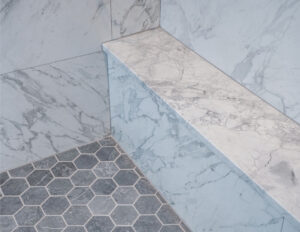Alright, let’s talk about a universal truth: no matter how big our house is, we never seem to have enough storage. It’s like socks disappearing in the dryer—our stuff just multiplies when we’re not looking. And if you’re living here in Denver, with a backyard shed that’s more of a “tiny timber tomb” than a functional space, you know the struggle is real.
We’ve seen it all. That shed becomes the final resting place for everything we don’t have a plan for, from half-empty paint cans to that one exercise bike with a very, very cozy layer of dust. But what if we told you that your tiny shed could be the most organized, efficient space on your property? We’re not talking about magic, just some smart strategies and a shift in perspective. As the team at Verified Builders, we live for these kinds of puzzles. Let’s unlock that potential together.
Contents
Rethinking Your Shed’s DNA
First things first, we need to change the way we see this structure. It’s not just a box for shovels and holiday decorations. It’s a blank canvas for vertical real estate.
Why are we so obsessed with going vertical? Because the floor space in these compact sheds is precious. The second we start piling things on the ground, we’ve lost. The goal is to get everything up on the walls, leaving a clear, walkable floor. It’s the single biggest game-changer for maximizing a small shed.
The Wall is Your Best Friend
Think of your shed’s walls as empty shelves waiting to happen. This is where we get creative.
- Pegboard Panels: This is the classic for a reason. It’s affordable, incredibly adaptable, and perfect for tools of all shapes and sizes. You can outline your tools with a marker—a little cheesy, maybe, but hey, it works.
- Slatwall Systems: If you want to level up from pegboard, slatwall is your answer. It’s what you see in retail stores, and it can handle heavier items with a variety of hooks and baskets. It gives a super clean, professional look.
- Simple Shelving: Don’t overcomplicate it. Sometimes, a robust, floor-to-ceiling set of shelves on one wall is all you need. Just make sure you anchor them securely. We’ve seen our share of wobbly shelves, and it never ends well for your favorite flower pots.
Here’s a quick comparison to help you decide:
| Feature | Pegboard | Slatwall | Floor-to-Ceiling Shelving |
|---|---|---|---|
| Cost | Low | Medium | Medium (DIY) to High (Custom) |
| Flexibility | High | Very High | Low (Once installed) |
| Weight Capacity | Low to Medium | Medium to High | Very High |
| Best For | Hand tools, lightweight items | Heavier tools, bulkier supplies | Boxed items, bins, large equipment |
| DIY Friendliness | Very High | Medium | Low for complex builds |
Look Up! The Ceiling Awaits
Once the walls are working hard, we look to the fifth wall—the ceiling. This is often completely wasted space.
We can install sturdy overhead rafters or hooks to hang bicycles, ladders, or even large, flat items like kayaks or surfboards (yes, we Coloradans have those, too!). Just be mindful of headroom. The last thing you want is to turn your shed into an obstacle course where you risk a concussion every time you grab the rake. Safety first, even in the pursuit of organization.
The Magic of Multi-Functional Furniture
Okay, “furniture” might be a strong word for a shed, but the principle stands. Every item inside should earn its keep, preferably in more than one way.
A workbench, for instance, shouldn’t just be a surface. It should have storage underneath or built-in drawers. A heavy-duty chest can serve as both a work surface and a lockable container for hazardous items like fertilizers or pesticides, especially if you have kids or pets around. IMO, this is where thinking like a general contractor pays off. We’re always thinking about how a space can serve multiple purposes, a philosophy that works wonders in whole house remodeling and tiny sheds alike.
Getting Professional Help: When to Call the Pros
Now, we get it. This might sound like a lot of work. Maybe you’re looking at your shed and realizing it doesn’t have the right structural bones for some of these ideas. The walls might not be sturdy enough for heavy slatwall, or you’re dreaming of a small patio remodeling project that connects to a newly organized shed entrance.
This is exactly where a local expert comes in. A company like ours, Verified Builders, doesn’t just handle luxury home renovations or massive basement renovation projects. We apply that same problem-solving mindset to smaller spaces. Sometimes, a small custom remodel of the shed interior—like reinforcing walls or adding a proper window for light—makes all the difference in creating a functional space.
Why would you call a remodeling company for a shed? A few reasons:
- Structural Integrity: We can ensure your walls can handle the weight of your new storage systems.
- Custom Solutions: We can build bespoke shelving and cabinetry that fits your exact space and needs, something you can’t get off the shelf.
- Efficiency: Let’s be honest, we can probably get it done faster and with less swearing than a DIY project that stretches over six weekends.
Finding the nearest or closest reputable contractor is key. You don’t want to hire someone from two hours away for a small job. A quick search for “home renovation contractor near me” will pop, but you should always dig into the reviews. Look for a general contractor or remodeling company with experience in space-maximizing solutions, whether it’s a garage conversion, a bathroom remodeling project, or, yes, a shed overhaul. The principles are often the same!
Your Questions, Answered (No Judgement)
We hear these all the time, so let’s tackle them head-on.
1. My shed is packed to the brim. How do I even start?
This is the most common hurdle. The answer is simple, but not easy: you have to empty it completely. We know, it’s a pain. But it’s the only way. Create three piles: Keep, Donate/Toss, and “Why Do I Even Have This?!” Be ruthless. If you haven’t used it in a year, you probably don’t need it taking up prime real estate. This is the first step we’d take in any organizational project, from a basement remodel to a home addition.
2. How can I protect my tools and belongings from Denver’s humidity and temperature swings?
Moisture is the enemy. For a simple fix, a rechargeable dehumidifier can work wonders in a small space. For a more permanent solution, consider having a pro add proper ventilation or even a small, insulated wall system. It’s a smaller version of the thinking a basement remodel contractor uses to tackle dampness. For your most sensitive items, sealed plastic bins are your best friend, far better than cardboard boxes that attract moisture and pests.
3. I have a very odd-shaped shed with a sloped roof. Can I still maximize space?
Absolutely! This is where custom remodels and built-in solutions shine. A sloped roof creates awkward headroom, but it also creates perfect nooks for low-level shelving or custom-built cabinets that follow the roofline. It’s about embracing the quirk of the space rather than fighting it. This is the kind of creative challenge we love at Verified Builders—turning a perceived negative into a unique storage feature.
The Final Word: Reclaim Your Space
Transforming a cramped Denver shed from a chaotic mess into a streamlined storage hub isn’t just about putting things away. It’s about reclaiming your sanity and making your life easier. No more dreading the search for a specific tool or buying another rake because you can’t find the one you already own.
The principles are universal: go vertical, use every cubic inch, and make every element multi-task. Whether you’re tackling this yourself or thinking of giving a local expert like Verified Builders a call, the goal is the same. We want you to have a space that works for you, not against you. So, what are you waiting for? That shed isn’t going to organize itself. 🙂


